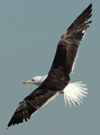 nominate Lesser Black-backed Gull (L. f. fuscus)
nominate Lesser Black-backed Gull (L. f. fuscus)
(last update:
Amir Ben Dov (Israel)
Hannu Koskinen (Finland)
Mars Muusse (the Netherlands)
fuscus 1cy July
fuscus 1cy Aug
fuscus 1cy Sept
fuscus 1cy Oct
fuscus 1cy Nov
fuscus 1cy Dec
fuscus 2cy Jan
fuscus 2cy Feb
fuscus 2cy March
fuscus 2cy April
fuscus 2cy May
fuscus 2cy June
fuscus 2cy July
fuscus 2cy Aug
fuscus 2cy Sept
fuscus 2cy Oct
fuscus 2cy Nov
fuscus 2cy Dec
fuscus 3cy Jan
fuscus 3cy Feb
fuscus 3cy March
fuscus 3cy April
fuscus 3cy May
fuscus 3cy June
fuscus 3cy July
fuscus 3cy August
fuscus 3cy Sept
fuscus 3cy October
fuscus 3cy Nov
fuscus 3cy Dec
fuscus 4cy Jan
fuscus 4cy Feb
fuscus 4cy March
fuscus 4cy April
fuscus 4cy May
fuscus 4cy June
fuscus 4cy July
fuscus 4cy Aug
fuscus 4cy Sept
fuscus 4cy Oct
fuscus 4cy Nov
fuscus 4cy Dec
fuscus ad Jan
fuscus ad Feb
fuscus ad March
fuscus ad April
fuscus ad May
fuscus ad June
fuscus ad July
fuscus ad Aug
fuscus unringed Aug
fuscus ad Sept
fuscus ad Oct
fuscus ad Nov
fuscus ad Dec
| adult fuscus: November Background document for Lesser black backed gull Larus fuscus fuscus - OSPAR Convention -
This background document on the Lesser black backed gull – Larus fuscus fuscus - has been developed by OSPAR following the inclusion of this species on the OSPAR List of threatened and/or declining species and habitats (OSPAR agreement 2008-6). The document provides a compilation of the reviews and assessments that have been prepared concerning this species since the agreement to include it in the OSPAR List in 2003. The original evaluation used to justify the inclusion of Larus fuscus fuscus in the OSPAR List is followed by an assessment of the most recent information on its status (distribution, population, condition) and key threats prepared during 2008-2009. Chapter 7 provides recommendations for the actions and measures that could be taken to improve the conservation status of the species. On the basis of these recommendations, OSPAR will continue its work to ensure the protection of Larus fuscus fuscus, where necessary in cooperation with other organisations. This document may be updated to reflect further developments. Ecology and breeding biology Larus fuscus fuscus is a migratory species, leaving the breeding areas from August to fly south to the Black Sea and the eastern part of the Mediterranean and Africa. Breeding colonies are often situated many kilometers inland, often on bogs or other flat areas or on small islands nearly always with rich dense vegetation. L. fuscus is a surface predator and feeds mainly on Atlanto-Scandic herring, Clupea harengus and sprat, Sprattus sprattus (Strann, 1992: In northern Norway, the species is a typical offshore feeder with a very limited terrestrial diet, and only infrequently feeds at rubbish dumps, although this has been reported in Finland to some extent.). Original evaluation against the Texel-Faial criteria for which the species was included on the OSPAR List The subspecies L.f.fuscus was nominated by one Contracting Party (Norway), and first listed by OSPAR 2003. The criteria cited were decline, rarity and sensitivity, with information also provided on threat. Distribution in OSPAR maritime area The species has a complicated systematics: 5 subspecies of L.fuscus have been described and the classification is widely accepted (ICES, 2002). The subspecies, L. fuscus fuscus breeds in Sweden and northern Norway across to the western part of the Kola Peninsula and the western White Sea and accidentally on Bjørnoya, and also in Estonia and in very small numbers in eastern Denmark (Strann, Semashko and Cherenkov, in Anker-Nilssen et al., 2000; Wetlands International, 2006; Thomas Bregnballe in litt. 2008). In Finland, the subspecies breeds through southern and central Finland but is a rare breeder in the north. Most of those breeding in Sweden, Finland and Denmark breed within the Baltic Sea basin and so originate outside the OSPAR area but some of these birds may move into OSPAR waters to feed or after breeding. L.f.fuscus is a true long-distance migrant, using the East European – Black Sea migration flyway. A varying number stay in the eastern Mediterranean down to Ethiopia, but the bulk of the population flies to winter in the Great Lakes region of Kenya, Tanzania, and Uganda. In Uganda, the largest concentrations occur at Lake Victoria and the water bodies of the western (Albertine) Rift Valley, notably Queen Elizabeth National Park. Birds stay here from October - November to March - April, with groups of up to 500 - 700 birds occurring (Satellite tracking of a juvenile bird from a breeding area in Finland found that it travelled to Lake Victoria in 1 month (29 August to 29 September 1999), and made its final non-stop journey from the Nile delta to Lake Victoria, a distance of around 3 500 km, in 92 hours (average 38 km/h; Kube et al., 2000). A few birds also winter in south-west Asia (Wetlands International, 2006). Apart from a limited northward migration, immature birds remain in the wintering areas through the summer. The adults arrive on the breeding grounds in late May and early June (del Hoyo et al. 1996; Malling Olsen and Larsson, 2004). Population (current/trends/future prospects)
Tables
|
Read the complete PDF:
Background document for Lesser black backed gull Larus fuscus fuscus |
|||||||||||||||||||||||||||||||||||||||||||||||||||||||||||||||
 L. f. fuscus HT-266.457 November 26 2010, Ashdod, Israel. Pictures: Amir Ben Dov. Arrested moult at P3. One-legged bird. L. f. fuscus HT-266.457 November 26 2010, Ashdod, Israel. Pictures: Amir Ben Dov. Arrested moult at P3. One-legged bird. |
||||||||||||||||||||||||||||||||||||||||||||||||||||||||||||||||
 L. f. fuscus CWWR September 17 2010, Ashdod, Israel. Pictures: Amir Ben Dov. L. f. fuscus CWWR September 17 2010, Ashdod, Israel. Pictures: Amir Ben Dov. |
||||||||||||||||||||||||||||||||||||||||||||||||||||||||||||||||
Primary moult halfway. |
||||||||||||||||||||||||||||||||||||||||||||||||||||||||||||||||
Primary moult halfway. |
||||||||||||||||||||||||||||||||||||||||||||||||||||||||||||||||
 L. f. fuscus adult, November 26 2010, Ashdod, Israel. Picture: Amir Ben Dov. L. f. fuscus adult, November 26 2010, Ashdod, Israel. Picture: Amir Ben Dov. |
||||||||||||||||||||||||||||||||||||||||||||||||||||||||||||||||
 L. f. fuscus adult, November 26 2010, Ashdod, Israel. Picture: Amir Ben Dov. L. f. fuscus adult, November 26 2010, Ashdod, Israel. Picture: Amir Ben Dov. |
||||||||||||||||||||||||||||||||||||||||||||||||||||||||||||||||
 L. f. fuscus adult, November 26 2010, Ashdod, Israel. Picture: Amir Ben Dov. L. f. fuscus adult, November 26 2010, Ashdod, Israel. Picture: Amir Ben Dov. |
||||||||||||||||||||||||||||||||||||||||||||||||||||||||||||||||
 L. f. fuscus adult, November 26 2010, Ashdod, Israel. Picture: Amir Ben Dov. L. f. fuscus adult, November 26 2010, Ashdod, Israel. Picture: Amir Ben Dov. |
||||||||||||||||||||||||||||||||||||||||||||||||||||||||||||||||
 The Convention for the Protection of the Marine Environment of the North-East Atlantic (the “OSPAR Convention”) was opened for signature at the Ministerial Meeting of the former Oslo and Paris Commissions in Paris on 22 September 1992. The Convention entered into force on 25 March 1998. It has been ratified by Belgium, Denmark, Finland, France, Germany, Iceland, Ireland, Luxembourg, Netherlands, Norway, Portugal, Sweden, Switzerland and the United Kingdom and approved by the European Community and Spain.
The Convention for the Protection of the Marine Environment of the North-East Atlantic (the “OSPAR Convention”) was opened for signature at the Ministerial Meeting of the former Oslo and Paris Commissions in Paris on 22 September 1992. The Convention entered into force on 25 March 1998. It has been ratified by Belgium, Denmark, Finland, France, Germany, Iceland, Ireland, Luxembourg, Netherlands, Norway, Portugal, Sweden, Switzerland and the United Kingdom and approved by the European Community and Spain.  The global population of L.fuscus (all subspecies) is put at 680 000 - 750 000 (BirdLife International 2008). The European breeding population is considered large (>300 000 pairs), with 5000 - 7000 pairs in Finland, 30 000 - 40 000 pairs in Norway, 4000 - 5700 pairs in European Russia, and 2000 - 5000 in Sweden and 4000 - 6000 pairs in Denmark, but these are for all subspecies and not exclusively L.f.fuscus (BirdLife International 2004). Recent national surveys resulted in estimate of 18 000 - 19 000 pairs (or 54 000 - 57 000 individuals) for the fuscus subspecies (Wetlands International, 2006).
The global population of L.fuscus (all subspecies) is put at 680 000 - 750 000 (BirdLife International 2008). The European breeding population is considered large (>300 000 pairs), with 5000 - 7000 pairs in Finland, 30 000 - 40 000 pairs in Norway, 4000 - 5700 pairs in European Russia, and 2000 - 5000 in Sweden and 4000 - 6000 pairs in Denmark, but these are for all subspecies and not exclusively L.f.fuscus (BirdLife International 2004). Recent national surveys resulted in estimate of 18 000 - 19 000 pairs (or 54 000 - 57 000 individuals) for the fuscus subspecies (Wetlands International, 2006).